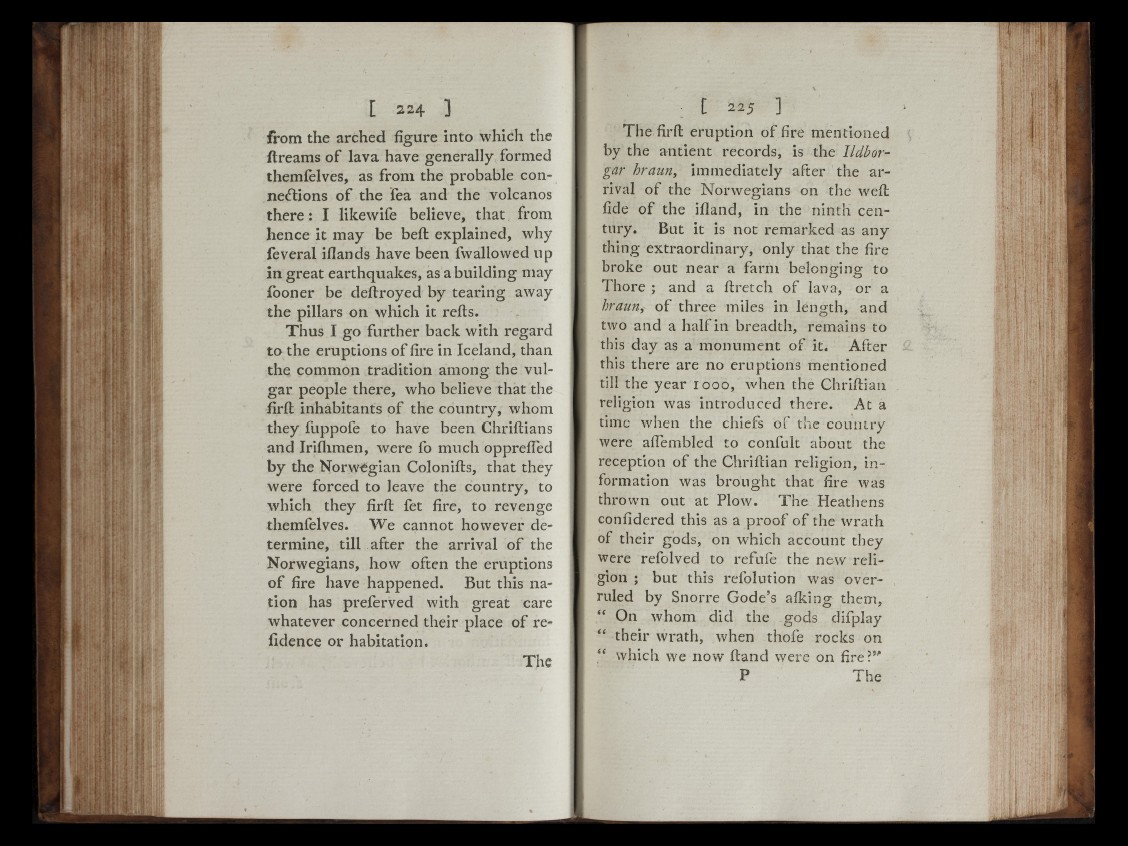
from the arched figure into which the
ilreams o f lava have generally formed
themfelves, as from the probable con-
nedions o f the fea and the volcanos
there: I likewife believe, that from
hence it may be befl explained, why
feveral iflands have been fwallowed np
in great earthquakes, as a building may
fooner be deilroyed by tearing away
the pillars on which it reits.
Thus I go further back with regard
to the eruptions o f fire in Iceland, than
the common tradition among the vulgar
people there, who believe that the
firil inhabitants o f the country, whom
they fuppofe to have been Chriftians
and Iriilimen, were fo much opprefted
by the Norwegian Colonifts, that they
were forced to leave the country, to
which they firil fet fire, to revenge
themfelves. We cannot however determine,
till after the arrival o f the
Norwegians, how often the eruptions
o f fire have happened. But this nation
has preferved with great care
whatever concerned their place o f re-
fidence or habitation.
The
The firil eruption of fire mentioned
by the antient records, is the lldbor-
gar hr aun, immediately after the arrival
o f the Norwegians on the weft
fide o f the iiland, in the ninth century,
But it is not remarked as any
thing extraordinary, only that the fire
broke out near a farm belonging to
Thore ; and a ftretch o f lava, or a
hraun, o f three miles in length, and
two and a half in breadth, remains to
this day as a monument o f it. After
this there are no eruptions mentioned
till the year 1000, when the Chriftian
religion was introduced there. At a
time when the chiefs of the country
were aifembled to confult about the
reception of the Chriftian religion, information
was brought that fire was
thrown out at Plow. The Heatlicns
confidered this as a proof of the wrath
of their gods, on which account they
were refolved to refufe the new religion
; but this refolution was overruled
by Snorre Code’s aiking them.
On whom did the gods difplay
“ their wrath, when thofe rocks on
which we now ftand were on fire?’"’
P The
. . . !
■ »
h..